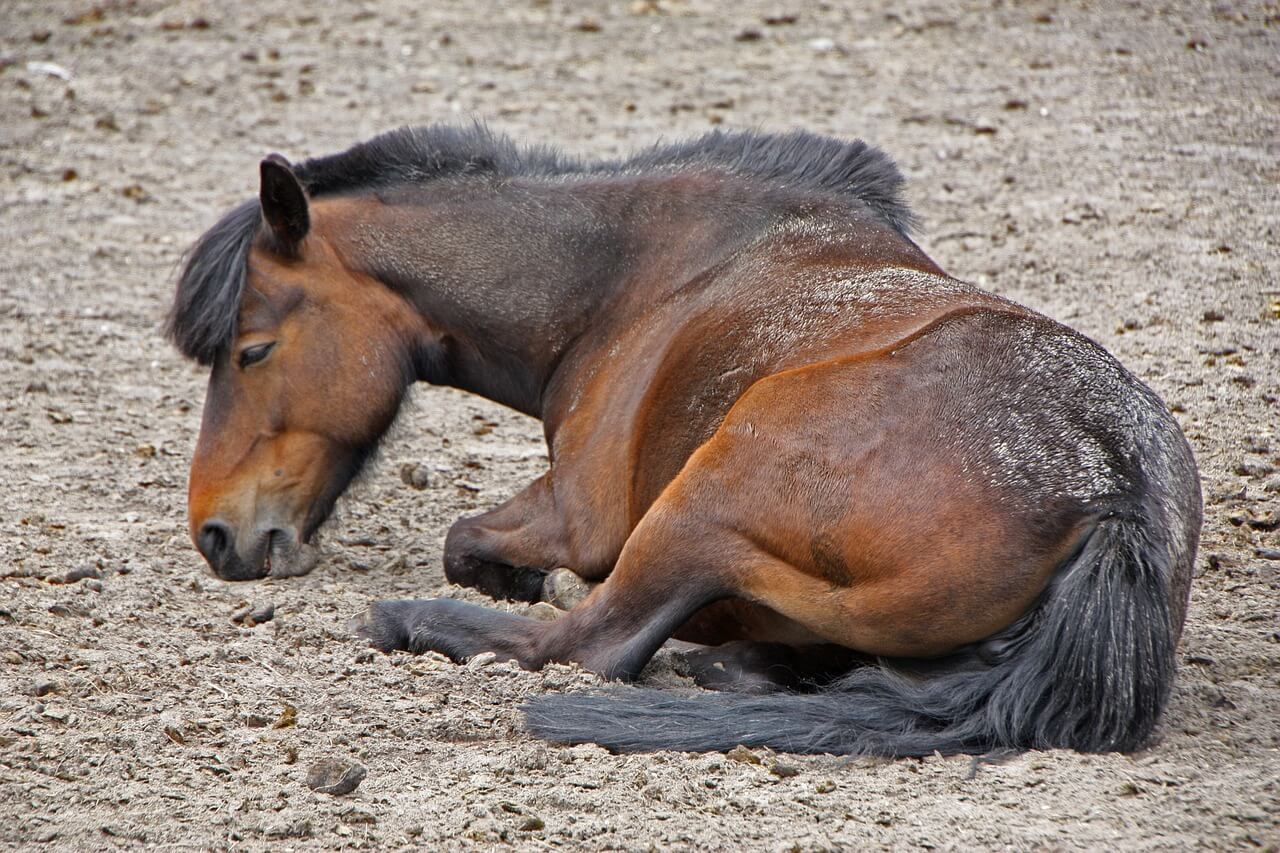You can start the day as normal with your lovely horse and by the end of the day, despite best veterinary care and your efforts, suddenly your horse is gone.
Colic simply means abdominal pain and this can vary in cause from simple indigestion to life threatening twisted gut. Horses react to a “painful belly” in different ways, some will become quiet and shut down, whilst others will be more dramatic, getting up and down, rolling, striking out, kicking at their belly. Profuse sweating and a disregard for people and no sense of self preservation (ie they will chuck themselves on the concrete or bang their heads as they crash against the stable wall) are usually signs of severe pain and in particular a colonic torsion (twisted gut).
Signs of Colic
- Not eating
- Rolling
- No droppings
- Sweating
- Dog sitting
- Frequently getting up and down / unsettled
- Pawing the ground
- Kicking at belly
- Looking round at belly
- Depression
- Self-trauma
There are many causes of colic, but sand is an important consideration when dealing with a case of colic.
How does sand get into the gut?
Horses eat it. Some horses will eat dirt – perhaps because they are salt deficient. On poor grazing, horses may pull up roots and ingest sand with the grass or when turned out in a sand school they may ingest the sand with the hay or through boredom. There is definitely an individual variation related to each horse’s grazing pattern because not all horses on the same paddock will accumulate sand in the gut. We often see an increase in the number of sand colics following a certain weather pattern – after a period of dryness, heavy rain will cause the sand from the soil to splash up onto the grassy leaf and therefore it is impossible to eat the grass without the sand.
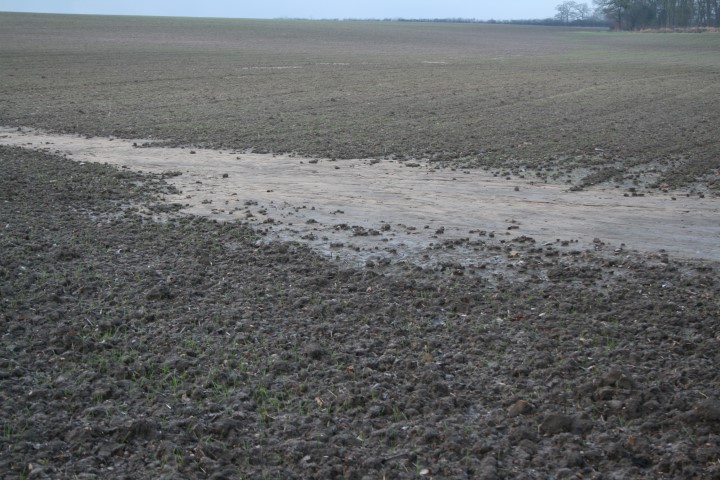
Sand after heavy rain on clay soil.
Why is sand a problem in the gut?
Sand is quite rough and can irritate the gut wall as it is dragged along, but most of the problems we see are caused by an accumulation (collecting together) of the sand within the gut.
The horse’s gut is about 30 metres long from mouth to anus (bottom). Its design involves at least 3 hairpin bends and other dramatic changes in diameter – some parts of the gut are only 4cm in diameter (width of tube that food passes through) whilst other parts have a diameter of at least 10cm. These design faults of sudden changes in size and angle of gut make the horse more susceptible to colic.
Because sand is heavy it sinks as it passes along the gut and it starts to collect at the bottom of the gut forming a layer. This layer of sand stops that piece of gut moving correctly (peristalsis is the technical name for the way your gut pumps food along). Over time this layer gets deeper and quite a “weight” of sand can collect as the rest of the food/liquid just moves along over the top of it. The sand can also accumulate at the hairpin bends in the horse’s gut. The weight of the sand can affect the horse’s performance – imagine trying to be athletic with a sandbag strapped to your belly!
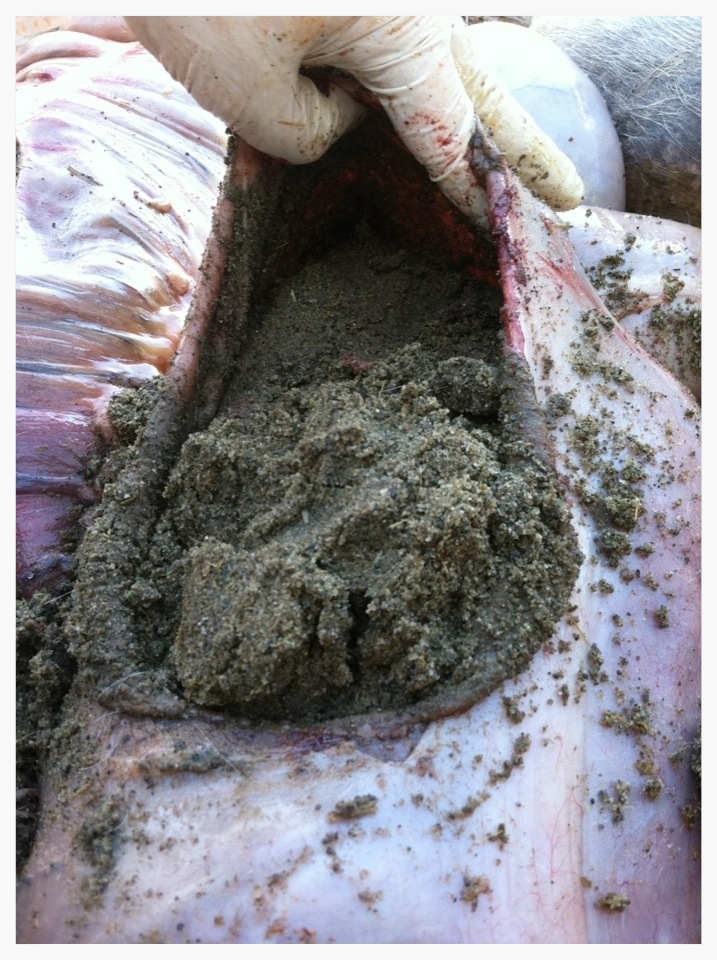
The accumulation of sand and slowing of gut mobility can lead to an impaction (sand blockage).
If you have ever tried to wash sand away (for example, clearing up after a beach outing) you’ll have noticed how persistent the sand is at hanging around and blocking the plug hole! This blocking effect is exactly what can happen in the horse’s gut too.
Because sand can affect the gut in different ways horses suffering from sand accumulation can be ill in different ways. Here are some examples:-
- Diarrhoea
- Normal dung with squirt of fluid at the end
- Intermittent low grade colic
- Heavy (in weight) heaps of dung
- No dung passed
- Bloated/pot belly
- Slow when ridden
- Depressed or just a bit quiet
- Grumpy
- Laying down
- No signs
- Straining to pass dung
- Any other ‘colic’ signs
How do you find out if your horse has any sand accumulation in the gut?
- Test the dung – anything more than ½ teaspoon of sand could be significant.
- Bucket of water – add generous double handful of dung and STIR.
- Leave 10 minutes and stir again.
- Wait one minute and tip out the water and dung and see how much sand is left in the bottom of the bucket (1/2 teaspoon requires action). This is known as a sand dung test.
- Tests SHOULD BE CARRIED OUT WEEKLY AFTER A SAND PROBLEM; MONTHLY AS A ROUTINE CHECK, and test all horses, not just one!
So how can we remove this sand?
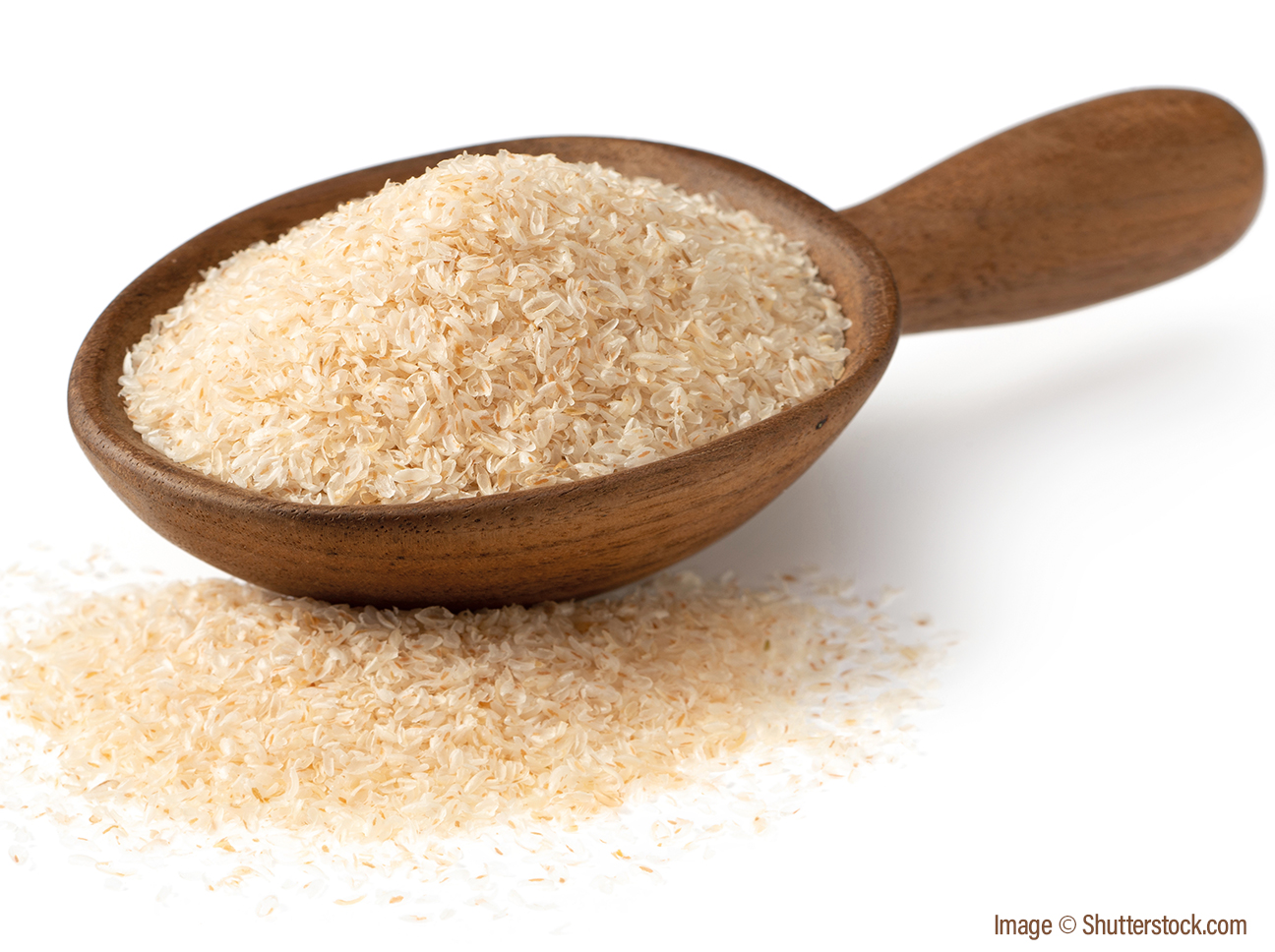
PLANTAGO OVATA (Isapghul or Psyllium).
Psyllium husks are part of the seed of the plant “plantago ovata” grown mainly in India and Pakistan. These husks are indigestible and are used as dietary fibre in man to help in the treatment of irritable bowel syndrome, constipation and diarrhoea.
Psyllium is useful in horses grazing areas of sandy soil, especially after long dry spells and should be used in the Autumn before stabling to clean out any material ingested when at pasture. A Kg of sand/ gravel is a Kg of extra inert weight that horses, especially competition horses, do not need. The presence of heavy inert material in the colon of the horse does predispose to episodes of colic.
Psyllium has been used in India on horses, elephants and people for hundreds of years. Mentioned in the 10th century books of Arabian and Persian physicians, Psyllium was introduced to India by the invading Mohammedan armies
Feeding Psyllium
When fed, Psyllium swells to a useful gel-like consistency that ‘suspends’ heavy inert particles and carries them along so they are voided.
FOR HORSES WITH A HISTORY OF SAND COLIC, OR FOR ‘AT RISK’ EQUINES GRAZING IN AREAS WITH LIGHT SANDY SOILS WHICH ARE SENSITIVE TO DROUGHT CONDITIONS, THEN A NORMAL (50g twice daily) FIVE DAY COURSE OF PSYLLIUM IS RECOMMENDED EVERY TWO MONTHS THROUGH THE YEAR TO ENSURE OPTIMUM REMOVAL OF UNWANTED SOIL MATERIAL FROM THE GUT.
At a preventative dose, give 50g (1 x 150ml scoop FM) Psyllium twice a day for 5 days; allowing access to clean drinking water at all times. After eating Psyllium horses pass jelly like motions, which frequently contain sand and gravel. This is quite normal and is no cause for alarm. For horses that have a heavy sand burden a higher dose of 250g (1/4 tub) twice a day for 5 days is recommended. For horses with a history of colic attacks, the use of Psyllium every day is recommended at a rate of one heaped dessertspoonful twice daily as a preventative measure.
Some owners throw the droppings into a bucket of water and stir – when left to stand for a short while the heavy material that has been voided sinks to the bottom quickly and can be inspected. Anything more than ½ teaspoon should be noted and dung monitored more closely. A teaspoon or more needs a ‘clear out’ dose and retest at the end of 5 days, PLUS a chat to your vet. THIS IS A DUNG TEST, WHICH SHOULD BE CARRIED OUT WEEKLY AFTER A SAND PROBLEM; MONTHLY AS A ROUTINE CHECK. In severe cases, several kgs of sand can be collected, after removal, this way.
Normal 5 day ‘clear out’ course
100 grams. (1/10th of a tub) split over 2 feeds per day for 5 days to finish the pack
Psyllium must be fed dry (as shown below) to avoid a slimy mush that your horse may refuse to eat. A little wet beet pulp with excess liquid taken out can be included if necessary. There must be unrestricted access to a supply of fresh clean drinking water. Once the feed is prepared then use straight away.
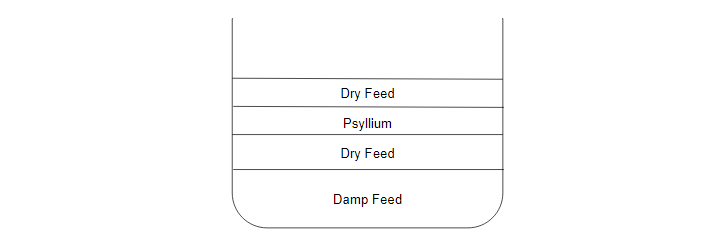
WE ALSO SELL A PELLETED VERSION OF PSYLLIUM WHICH IS EASIER TO FEED AND COMPETITIVELY PRICED, £61-99 FOR 3.2 KG, OR 2 TUBS FOR £110 including postage to most places.
This information sheet was last updated 01/12/2020
